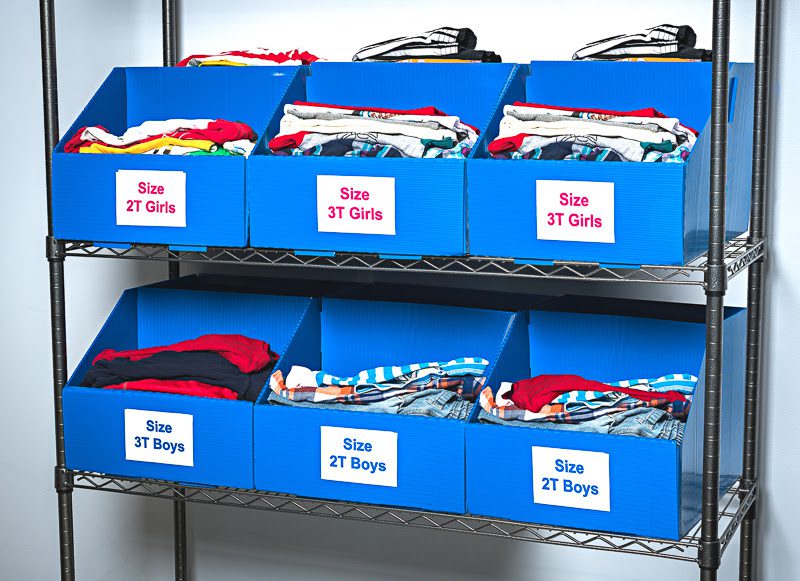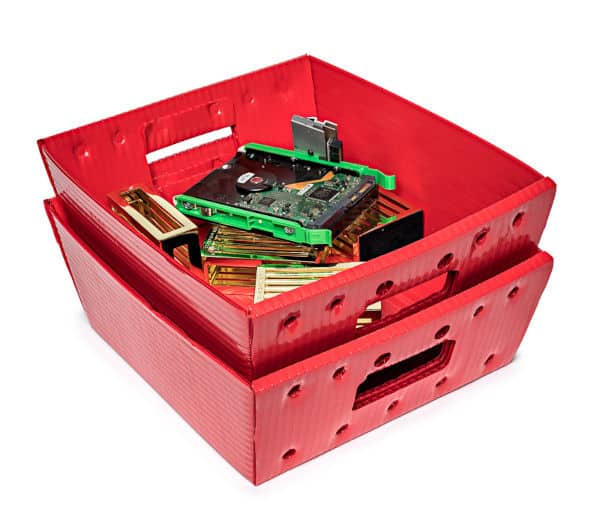Once your business gets big enough to store your inventory in a warehouse, keeping everything organized can feel imposing. Figuring out how to set up warehouse inventory management is the first step to this new level of business. But how can you decide on the best way to manage warehouse inventory?
Staying organized is the name of the game when you’re settling on how to set up warehouse inventory. The best idea is to decide on an organizational system and stick to it. Read on for a quick guide on the best ways to ensure organization, efficiency, and safety.
Proper Organization
The first step when you manage warehouse inventory is ensuring your new inventory system is organized correctly. Warehouse inventory management is crucial to an adequate, efficient warehouse inventory.
Without being properly managed, your employees will spend unnecessary amounts of time searching for products when you don’t set up warehouse inventory efficiently. This lack of organization will significantly lower your efficiency and injure the morale of employees spending hours trying to track something down.
It’s also much easier to take inventory to see what you have in your warehouse. This warehouse inventory management will help you with restocking and re-ordering goods. A disorganized warehouse is much easier to lose track of, making many items fall through the cracks – literally and figuratively.

Tags and Labels
One of the easiest ways to help with organizing is to ensure everything is properly labeled. With adequate labeling, your employees won’t have to open a container or dig around inside to see what’s inside.
Labeling can help your employees organize warehouse inventory management by content rather than size as well. Ultimately, a warehouse without the proper labeling will always feel disorganized and inefficient, so this is essential when learning how to set up warehouse inventory. The time and energy your employees save by being able to read a simple label would surprise you.
Ensure your containers and bins are correctly labeled to improve efficiency and storage. Color coding is another excellent way to keep things organized when you manage warehouse inventory.
Inventory Sheets
When you set up warehouse inventory, inventory sheets are vital to ensure you know everything inside your warehouse. Inventory sheets will help you keep tabs on what’s inside your bins, how much, and more. Some formats include information on when you should reorder or what the par amount on stock should be.
Some inventory sheets will be at the end of the aisles in your warehouse. These sheets let you see at a glance what’s on the aisle and how much you can expect to find. When it comes time to do your reordering as you manage warehouse inventory, looking over these inventory sheets can instantly inform you of what’s in your warehouse.
Storage Containers
You can’t leave everything in your warehouse loose on a shelf when you set up warehouse inventory. Loose items fall easily, break more manageably, and are much more challenging to keep track of. Instead, you’ll need containers to put everything in. What sort of containers you use will depend on your warehouse. Different goods may require storing in different ways, such as:
- Climate-controlled containers
- Fragile goods
Thankfully, storage containers don’t need to be expensive. In many cases, you can use something like a cardboard box or a simple plastic bin when you set up warehouse inventory. Labeling and organizing these storage containers are also much easier than loose goods. Overall, you should consider storage containers a mandatory part of your warehouse’s inventory system.
Organized Areas
Before you begin tossing things into your warehouse when you manage warehouse inventory, you should decide how to organize warehouse inventory. Alphabetical storage is one of the most common ways to organize warehouse inventory.
Labeling the areas you store goods in is essential to organizing. Signage and labeling at the start of labels will also help to keep these areas free of items that shouldn’t be there. Your employees will also be happy to have such clear direction on where items are and should be.
Goods that require special storage can sometimes decide your organization for you. If multiple products need to be climate controlled or stored low, you may choose to store all of these in the same area. Consider what you’re storing before you decide on a storage method when you set up warehouse inventory.
Clear Travel Areas
Once you know where everything is going in your warehouse, what about travel? Most warehouses are rather sizable, and setting areas for your employees to travel is crucial when you manage warehouse inventory.
Organized travel areas are vital to your warehouses, whether by foot or by wheels. Consider the following features when designing your warehouse layout.
Lanes Between Aisles
If you clutter aisles too closely together, storage can become a pain when you manage warehouse inventory and design your warehouse layout. High back-to-back shelves can make getting goods from the center of the frame dangerous and difficult. Similarly, low shelves with no room between them can become cluttered and disorganized.
Make sure that your aisles have plenty of room to travel between them. Standardize this amount of room, so your warehouse is symmetrical and easy to travel after you set up warehouse inventory. This standardized size will also help to store and retrieve goods more accessible and safer.
Designated Cart Paths
If your warehouse is big enough that you intend to implement vehicles such as carts, make sure that the paths are wide enough to accommodate this. There should never be a situation where an employee on foot is at risk of being hit by a cart when you manage warehouse inventory. To help prevent this, designate some paths to be for carts only.
You can also put up rails or blockers for some paths to ensure that only pedestrians can walk through them.
In general, it’s a good idea to prevent carts from being able to travel down paths with fragile goods. A light knock against one of the shelves can start a domino effect that sends thousands of dollars worth of goods to the ground.
Keep carts and pathing in mind when you design your warehouse and set up warehouse inventory if you intend to use them. Also, remember that large enough warehouses make carts almost a necessity. They can:
- Reduce travel time
- Increase carrying capacity
- Increase efficiency
Prioritize safety, but ensure efficiency whenever possible when you manage warehouse inventory and design your warehouse layout.
Vertical Versus Horizontal
When dealing with aisles to set up warehouse inventory, how should your warehouse store them? Do you want tall aisles that require ladders to reach the top or wide shelves that store less but are easily reachable? Every warehouse is different, and there are benefits to either choice. Here are some of the pros and cons of both vertical and horizontal aisles when you manage warehouse inventory.
Benefits of Vertical
Most warehouses use vertical storage. They do this because the warehouses are typically tall, and not using vertical storage wastes a great deal of space. If your roof is tall enough to accommodate vertical storage, why not use it?
Vertical storage is efficient and makes use of as much space as possible. However, without proper equipment, you can find reaching the higher shelves dangerous and difficult. If you go with vertical storage, ensure your staff has everything they need to reach the top shelves safely. You should also make sure there aren’t products stored high that need to be lower.
Benefits of Horizontal
Horizontal storage is favorable for not requiring machinery or gadgetry to reach higher shelves. It’s also much easier for employees to store and retrieve products closer to the ground.
Horizontal storing is best for heavy, large items. Items that can’t be stored high or are too large to store vertically safely get kept on low horizontal shelves. It’s also typically a cheaper alternative.
However, horizontal storage fails to take advantage of the height of your warehouse. This failure can lead to wasted space, as the ground level is the only thing storing anything. This storage style is often best for a short, wide warehouse.

Marrying Both Designs
There’s no need to commit yourself to extremes when you set up warehouse inventory. You can often marry both vertical and horizontal storage. Keep one area of your warehouse dedicated to horizontal storage. Here, you can store larger, heavier goods.
Another area can then be designated to hold other goods and vertical storage. This area can also help you keep a higher density of goods in one warehouse. The primary issue is that this ends up being more expensive in most cases. For any vertical storage you’ll need the same equipment for any vertical storage to reach the higher shelves. \
Investing in this equipment without a high amount of vertical storage can be a difficult financial choice when you manage warehouse inventory.
If you don’t mind the financial impact, this is one of the best ways that you can ensure storage and organization when you set up warehouse inventory. It’s best for warehouses that store a variety of goods that may run into situations where they need both kinds of storage. If your warehouse only needs horizontal or vertical storage, mixing the two is unnecessary. Assess your products and see what method works best for your warehouse.
MDI Can Help You Set Up Warehouse Inventory
Figuring out how to set up warehouse inventory management is unique to every warehouse and business. Your products will require a specific style of storage which can often help enforce the way you manage warehouse inventory. Consider trying a few different warehouse layouts to see which works best to organize warehouse inventory, and stick to the one that benefits you the most.
For more information on setting up your business ventures, be sure to contact us today to learn more.